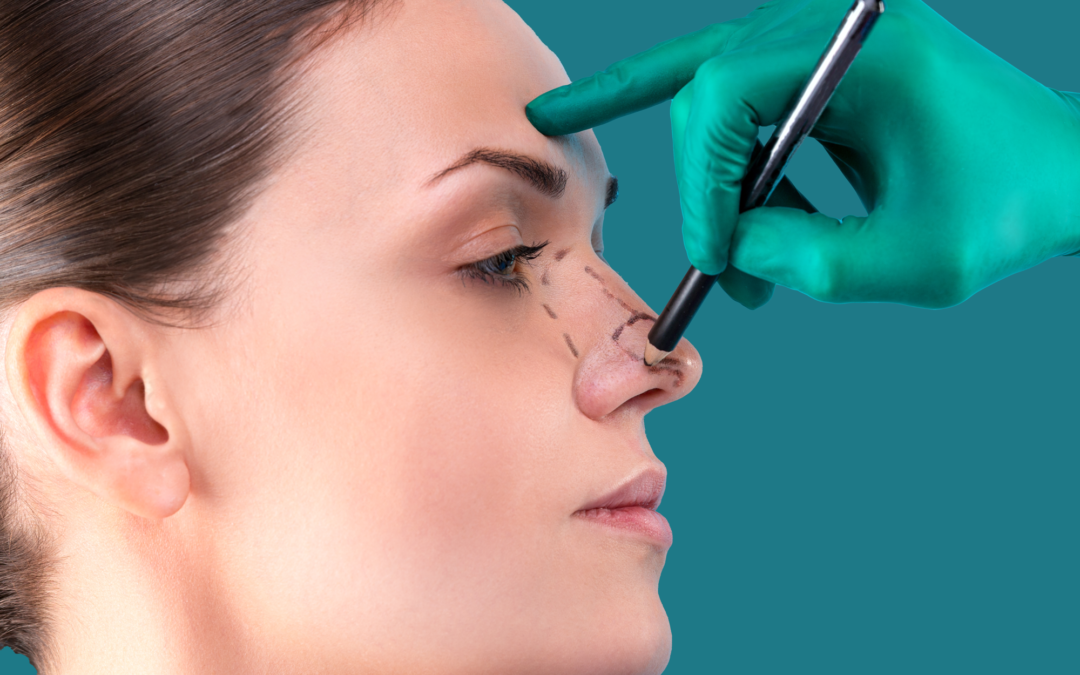Nasal rejunevation surgery : 3D photography transforms analysis
A leading trend in 2022
Nasal rejuvenation surgery or the Rejuvenation Rhinoplasty is trending high in 2022. This may partly be a reaction to the “Zoom Boom” during the Covid pandemic but isn’t the only reason for its progressive popularity. It is increasingly regarded as a common anti-aging procedure. As the central feature of the face, the nose is important for overall facial symmetry and an individual’s identity. Like the rest of the body, with the passage of time it is susceptible to change: skin becomes thinner, accentuating any underlying imperfections, plus the cartilage can lose its structure and rigidity…
One typical example of change is the “drooping” nasal tip. This can happen when the supporting cartilage in “ribbons” towards the end of the nose starts to lose its strength and splays out and down, making the tip of the nose wider, rounder and appearing to “droop.” In such cases, patients are not usually seeking to dramatically alter the shape of their nose but aim rather “to get back to the more refined and airbrushed look that they had when they were younger.”1
Rejuvenation rhinoplasty – analysis matters
When correcting a “drooping” nasal tip, a rejuvenation rhinoplasty will focus on refining the tip and rotating it upwards. This will help to make the nose appear smaller and for it to sit higher on the face. An essential part of a consultation is providing a clear explanation of the surgical procedure and then analyzing results. For practitioners, having access to tools that enable and facilitate visualization that is both accurate and accessible, is a valuable and reassuring addition to the consultation process.
3D imagery, an advanced solution compared to 2D
Only 3D imagery can enable the patient’s face to be viewed from every angle and provide a more in-depth analysis, compared to 2D. The angles of the patient’s nose and any nasal deviation can be measured accurately and displayed with digital clarity which is particularly practical and beneficial prior to nasal rejuvenation surgery. LifeViz® 3D imaging systems include an innovative before and after lifting tool which enables visualization of the displacement of the skin. It accurately measures and displays the change in angle and distance, using color indicators and measures the displacement in millimeters.
Post-surgery: 3D imagery to assess results
LifeViz® 3D imaging systems are not only useful prior to nasal surgery but also afterwards, providing accurate analysis of different rhinoplasty techniques and the treatment results. Following surgery, patients and doctors can together visualize the change in angles and analyze overall facial harmony, thanks to the different measuring tools. Too often, patients find it hard to assess changes but with the LifeViz® 3D imaging systems many tools like the slider or the before/after overlay can allow patients to visualize the difference(s) instantly and accurately. This ultimately helps generate patient satisfaction and loyalty.
QUANTIFICARE, on trend
Previously, the rhinoplasty was not necessarily considered an anti-aging procedure. 2022 is proving that this has changed. In a UCLA (California) study, artificial intelligence guessed female patients were up to 3 years younger following rhinoplasty than they looked before the procedure2. It’s clear that nasal rejuvenation surgery has a leading role to play in aesthetic medicine. 3D imagery continues to be on trend, enabling practitioners and patients to have more in-depth insights into understanding and predicting results. LifeViz® tends to have a nose for these things……
1. Dr Dara Liotta, double board-certified facial plastic and reconstructive surgeon in New York City
2. https://newsroom.ucla.edu/releases/ai-rhinoplasty-nose-job-younger

